For some authors, self-publishing is the dream. For others, it's a traditional contract they hunger for. For others still, finding the perfect balance between the two is the dream come true. Today, the Alliance of Independent Authors is talking to several ALLi members who have licensed their rights to some books while self-publishing others. This is the ultimate guide to being a hybrid author.
What Is a Hybrid Author?
Hybrid author is the term used to describe a writer who both self-publishes and licenses publishing rights to trade publishers.
There are five key business models for independent authors and a rights licensing / hybrid author model is one of them. In this model, in addition to selling your own books and products, you also licence some publishing rights to third-party rights buyers.
The advantages of the hybrid model is that a publisher can bring expertise and new opportunities which expand the reach of a book beyond what you can do. The down side is the sundering of some creative control and freedom.
See author Sara Rossett's summary of all the pros and cons below.
Hybrid Authors and Selective Rights Licensing
- Format
- Term
- Territory
Hybrid Author Versus Hybrid Publisher
Sometimes people confuse hybrid authors and hybrid publishers. Hybrid publishers also mix things up, offering a mix of self-publishing and trade-publishing services to authors. Hybrid publishers have very varied business models, methods of working with writers, and approaches to marketing and distribution. There are ethical and reputable hybrid publishers, but there are many more substandard services and some that claim a hybrid publishing model as a means of camouflaging exploitative vanity press operations.
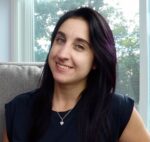
Hybrid Author Katlyn Duncan
Hybrid Author Case Study: Katlyn Duncan
Katlyn Duncan is a multi-published author of adult and young adult fiction, and has ghostwritten over 40 novels for children and adults. When she’s not writing, she’s obsessing over many (many) television series’, and hanging out on YouTube where she shares her writing process and all the bookish things.
Keep up with Katlyn on her newsletter here.
My journey as an author began with the traditional route of publishing. In 2012, I signed a contract with a digital-first imprint (meaning the books would come out in eBook to start without a guarantee for any other formats including paperback or audiobook) for a three-book series, without an agent. From 2013-2019, I signed three more contracts, totaling thirteen books traditionally published.
Throughout those years of traditional publishing, I learned a lot about how to craft a compelling novel, how to be collaborative with a team, and what I did or didn't want for my career. This was while I was working full-time, so the support given to me was everything I needed to make my publishing dreams come true. Though, with a digital-first imprint my first eleven books were still only in eBook format. That dream of holding a book shaped thing with pages and my name on the cover was still out of reach.
My biggest pain points with traditional publishing were author orphaning and lack of communication. Author orphaning refers to editors leaving an imprint or the business for any reason. This often left me feeling abandoned, with a lot of self-doubt about my career and made me look for greener pastures. Coupled with the lack of communication on a regular basis and the emerging self-publishing technologies, I eventually decided to explore the hybrid author publishing route, and it has been a game-changer for me.
Going hybrid as an author can be a daunting task, but it doesn't have to be. It's important to understand that the process of going hybrid is not a one-size-fits-all solution, and each author must make practical decisions that best suit their needs and goals.
One of the most important practical decisions to make as a hybrid author is understanding your intellectual property rights. This includes the rights you currently hold, as well as the rights you want to keep in the future. For example, if you've traditionally published a book and the rights have reverted to you, you now have the option to self-publish that book. If you’re a self-published author, you can sell the subrights and foreign translations to traditional publishers as well.
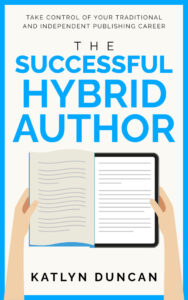 Another important decision is understanding the financial implications of going hybrid. This includes the costs associated with editing, cover design, and formatting, as well as the potential income streams from both traditional and self-publishing. It's important to know your financial goals and how going hybrid can help you achieve them. You can reinvest advances from your traditional books to pay for the costs of self-publishing, or you can use your higher royalties from your independent books to fund your marketing efforts.
Another important decision is understanding the financial implications of going hybrid. This includes the costs associated with editing, cover design, and formatting, as well as the potential income streams from both traditional and self-publishing. It's important to know your financial goals and how going hybrid can help you achieve them. You can reinvest advances from your traditional books to pay for the costs of self-publishing, or you can use your higher royalties from your independent books to fund your marketing efforts.
Marketing and promotion is another important aspect to consider. As a hybrid author, it's important to have a plan in place for how you will market and promote your books, and to understand the strengths and weaknesses of each channel. You can leverage your publisher and their distribution channels to promote your backlist as a whole to find more readers.
Adaptability is also key as the publishing industry is constantly changing, and as a hybrid author, it's important to be open to new opportunities and to be willing to adapt and evolve. Many opportunities are out there now for different ways to fund and publish books. Keep an ear to the ground and understand the evolving publishing industry to learn new ways of advancing your career.
There are many different ways to go hybrid as an author. Since I was traditionally published first, I had books reverted to me that I have since self-published. For self-published authors, you have the opportunity to sell subrights to your published books, or write dedicated books for the traditional market and query them to agents and editors. I consider each book project on their own, and I would never say never to traditionally publishing again, but I love the control that self-publishing has to offer.
Roadmap for traditionally published authors looking to go hybrid
Your rights: Find out if the rights to your traditionally published book have reverted back to you, and what rights you'll be giving up if you decide to self-publish.
Research and budget for the costs of self-publishing: This includes editing, cover design, formatting, and distribution costs.
Choose a self-publishing platform: Research the best options for your needs, considering factors such as distribution reach, royalties, and ease of use.
Develop a marketing and promotion plan: If you are writing in a similar genre to your traditional books, leverage your current audience for promotion methods. If it’s a new genre, building a community of readers, reviewers, and other authors can be helpful in promoting your book
Be adaptable and flexible: The self-publishing industry is constantly changing and it's important to be open to new opportunities and to be willing to adapt and evolve.
Roadmap for independent authors looking to go hybrid
Research traditional publishing options: Look into literary agents and publishers that are a good fit for your genre and writing style.
Be open to feedback and revisions: The traditional publishing process often involves revisions and feedback. Be open to constructive criticism and be willing to revise your manuscript as needed.
Be patient: The traditional publishing process can take time, so be prepared for the possibility of multiple rejections before finding the right fit.
Be prepared to sign a contract: If you do land a traditional publishing deal, be sure to read and understand the terms of the contract before signing.
The sky's the limit and the decision is yours, so take the time to research, understand and decide what's best for you and your career.
In the ‘Successful Hybrid Author’ you will get tips and tricks from myself and many different authors who’ve pursued the hybrid author path in various ways. Pick it up today in eBook, paperback, and hardback.
The Pros and Cons of Being A Hybrid Author: Sara Rosett

Sara Rosett hybrid author
Sara Rossett was first published by a traditional publisher, Kensington Books, in 2006. She licensed ten books to Kensington over the next eleven years. During the last six of those years, she was also self-publishing her novels. She offers her takeaways on the pros and cons of being a hybrid author below.
Pros of Being A Hybrid Author
Project management of book production: cover, formatting, copyediting, etc.
A traditional publisher handles all aspects of book production, usually including a developmental edit and a copyedit, which can be expensive.
Reviews from industry publications
Publishers distribute Advance Review Copies to industry review outlets like Library Journal, Publishers Weekly, and Kirkus. A review in one of those publications can translate into more orders from libraries and bookstores.
Bookstore distribution
This aspect is probably the biggest plus for indie authors. Traditional publishers have the ability to get your books into bookstores, something that’s much more difficult for indie authors to do on a large scale, which means you might reach new readers.
Prestige
Some people still consider being traditionally published as more prestigious than being indie published.
You're also eligible for membership in professional writer organizations and have the ability to participate in conference panels.
Many professional author organizations limit membership to authors who have been published through traditional publishers, and many conferences only select panelists and speakers who have been traditionally published.
Cons of Being A Hybrid Author
Little or no control over cover, retail price, discount pricing, manuscript text, and layout
The publishing house has final say on all aspects of the book from the cover design to decisions on style and grammar.
Bookstore distribution is usually only for release month and in selected stores
It’s wonderful to see your book on the shelf in bookstores. It was a dream come true for me. However, one thing I didn’t realize was that my book was in bookstores during the month the book was released. After that month, the extra books were shipped back to make room for the next wave of books being released. Also, bookstores may only carry your books in certain stores. My books tended to be distributed to suburban bookstores because the stores felt that’s where my readers were.
Must juggle your indie projects with traditional projects
While the traditional publisher does handle the production process of your book, they’ll still want your input throughout the publishing process. After you turn the book in, you’ll continue to have deadlines: an editorial letter from your editor, copyedits, and page proofs, not to mention the publicity tasks.
Little or no support with publicity
If you’re a mid-list author your publisher will help with publicizing the book, but your publisher expects you to contribute to (and sometimes carry) the publicity for the new release. Look to see what sort of publicity the publisher currently does for their mid-list authors to find out what you can generally expect. Unless you’re a big name, be prepared to pay for some promotion, such as advertising, as well as travel if you go to conferences or visit bookstores.
Difficult to track results of advertising
Without real-time access to sales figures, it’s hard to know if your promotional tactics are working, but some publishers now have dashboards where authors can check sales.
Other Potential Cons of Being A Hybrid Author
I’m not a lawyer and this isn’t legal advice, but if you are considering publishing traditionally, have a literary attorney look over the contract. Here are some items that could become a “con” if you’re interested in publishing traditionally:
Non-Compete clause
If you want to continue to publishing independently, make sure you have the ability to publish when you want and in the genres you prefer.
Out of print clause
It’s becoming more difficult for authors to get their rights back. Before digital books, publishers had to print and warehouse physical books. After a few years it didn’t make financial sense for them to warehouse books that weren’t selling, so they’d reduce their stock. Once the number of books fell below a certain level (for instance 100 books) and the books weren’t available in physical bookstores, a title was considered to be “out of print.” Authors could get the rights back to their work at that point. Today with digital books, “out of print” clauses include ebook sales. Publishers have learned the value of their backlist titles. They often run sales on titles that are close to falling into the “out of print” category, thus boosting sales and keeping the title “in print.” So be aware that you may be essentially giving your copyright to a publisher when you agree to license your work to a traditional publisher.
All rights may not be exploited
A publisher will most likely want all rights (world print and ebook rights as well as other rights like audio) but they may not exploit all those rights. For instance, even if they have audiobook rights, they may decide it’s not cost-effective to produce an audiobook.
As for me, after licensing the rights to 10 books to a traditional publisher, I decided I liked the creative control and the freedom of indie publishing, not to mention the higher royalties and the ability to control my intellectual property. The chance of me getting the rights back to my traditionally published series is slim, so I’ve focused on creating new intellectual property—two cozy mystery series and one historical mystery series. I have final say on covers, formatting, pricing, discounting, as well as formats. I’ve brought out two of the series in audio and also licensed the rights to one of my indie series to a traditional audiobook publisher. I love the flexibility being all-in indie, but a hybrid or all-traditionally published model may be a better fit for other authors.

British indie author, Jane Davis
Case Study: Going Hybrid with Audio Jane Davis
Jane Davis’s first novel, ‘Half-Truths and White Lies’, won a national award established with the aim of finding the next Joanne Harris. Interested in how people behave under pressure, Jane introduces her characters when they are in highly volatile situations and then, in her words, she throws them to the lions. Jane Davis lives in Carshalton, Surrey, in what was originally the ticket office for a Victorian pleasure garden, known locally as ‘the gingerbread house’. When she isn’t writing, you may spot Jane disappearing up the side of a mountain with a camera in hand. Find her on Twitter, Facebook and her website.
Q. Tell AskALLi a little bit about your hybrid status
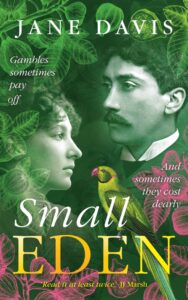 I am not a typical hybrid author, because I don’t have separate titles that I publish independently and others that are published under contract with a publishing house. Instead, I self-publish eBooks and paperbacks and am under contract for the same title with a digital production company.
I am not a typical hybrid author, because I don’t have separate titles that I publish independently and others that are published under contract with a publishing house. Instead, I self-publish eBooks and paperbacks and am under contract for the same title with a digital production company.
My first novel was published by Transworld in 2009 after I won the Daily Mail First Novel Award. As part of the process, I was asked to cut 20,000 words and to change the book’s ending to a scenario they gave me. They also changed the title from Venn Diagrams to Half-Truths and White Lies.
I was consulted about the cover design, but ultimately my choice was over-ruled. At the time I was agented. My agent advised me that these requests were all routine, just part of the process of being published. What she failed to explain were the implications of being published under Transworld’s Black Swan label—their women’s fiction imprint.
Both my agent and publisher were encouraging about the next book I was writing. The emphasis was on the need to finish it as soon as possible. But when I came to present it, even though Transworld said they loved it, they turned it down because it didn’t fit the Black Swan label.
When I came to self-publish, it was an advantage to already have a good idea of the process from completed manuscript to publication. In time, I found that I loved being in the driving seat, choosing which professionals and designers to work with. Frustratingly, like many traditional publishers, Transworld were slow to see the possibilities of eBooks, and so Half Truths and White Lies had only been released as a paperback and an audiobook—a handy pack of eight cassettes. The eBook came much later, in 2012. As an indie, eBooks have been a vital part of my business model from day one.
Q. What made you decide to go hybrid with audio only?
Audiobooks had been on my radar for some time, but I was nervous about the cost of production. I write both standalone titles, both contemporary and historical, but lean towards literary fiction—not the best-selling of genres!
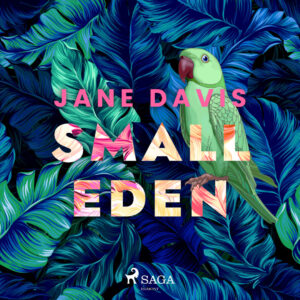 After my novel, At the Stroke of Nine O’Clock, was shortlisted for The Selfies Awards in 2021, Saga Egmont approached me. Initially, they wanted to produce three of my novels as audiobooks, with more to follow if all went well (the second tranche was released 5 January 2023).
After my novel, At the Stroke of Nine O’Clock, was shortlisted for The Selfies Awards in 2021, Saga Egmont approached me. Initially, they wanted to produce three of my novels as audiobooks, with more to follow if all went well (the second tranche was released 5 January 2023).
I felt that the company was a good fit. Saga Egmont work in digital only and are perhaps more forward thinking than a traditional publishing house and are not as risk adverse. They don’t mind that I write both contemporary and historical fiction, in fact, they positively welcome the variety. Neither do they see my titles as a challenge to market. I was happy that no changes could be made to the texts because they were purchasing the rights for published works.
The prospect of having another avenue by which readers could discover my novels was very attractive. In other words, it forms part of my marketing strategy at zero cost to me. The idea of being paid for published books, with very little additional work to be undertaken, was obviously also a major selling point. And this additional revenue helps support my writing. And the release of audiobook titles also creates new opportunities to talk about titles in my backlist.
Q. What is your biggest lesson or takeaway from being hybrid?
Being hybrid will only suit authors who are willing to relinquish creative and quality control. Once I had signed the contract, delivered the manuscripts, and given Saga Egmont some information to help them select narrators, I had absolutely no involvement.
I didn’t see the covers until the day before release. Because I write standalone titles, I have worked very hard on my brand. The first set of covers were so very different, I took the view that they would serve as a good A/B test. If the audiobooks sold well, I might have to re-think. The second set of covers take elements from the originals, and I think are very effective.
Q. Do you have any other practical advice or tips for Indies considering it?
Before signing a contract, have conversations with the publisher so that you are aware if you will be relinquishing control of:
- Branding and cover design
- Title
- Book production and stock—In addition to the Transworld’s adoption of eBooks, there was a frustrating six-month period when Half-Truths and White Lies wasn’t available as a paperback. They now use print-on-demand for older titles
- Quality control
- Distribution
- How books will be marketed (including the publisher imprint).
- Real-time sales figures.
Be very clear about the rights that are included in the contract. Ensure that there is no reference to rights other than the format you want to sell. And it’s also vital to look for rights reversion clauses so that you can think about what to do if things do not work out as you hope.

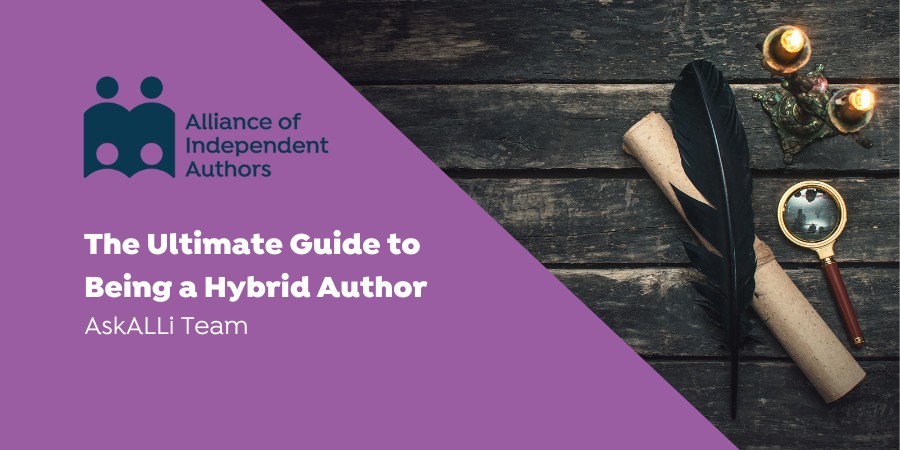
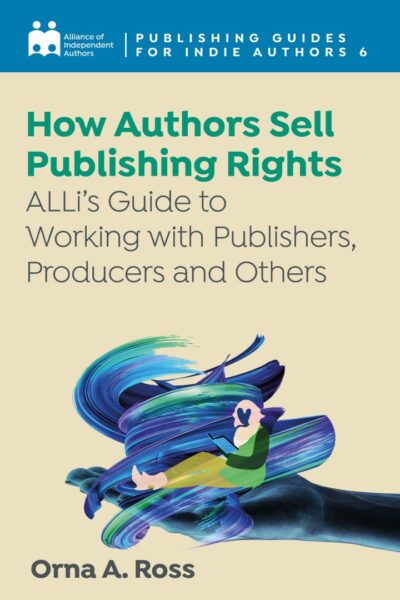



In fact, I’ve started to notice predatory vanity presses employing the phrases “your publishing partner” and “partnership publishing” in Facebook advertisements.